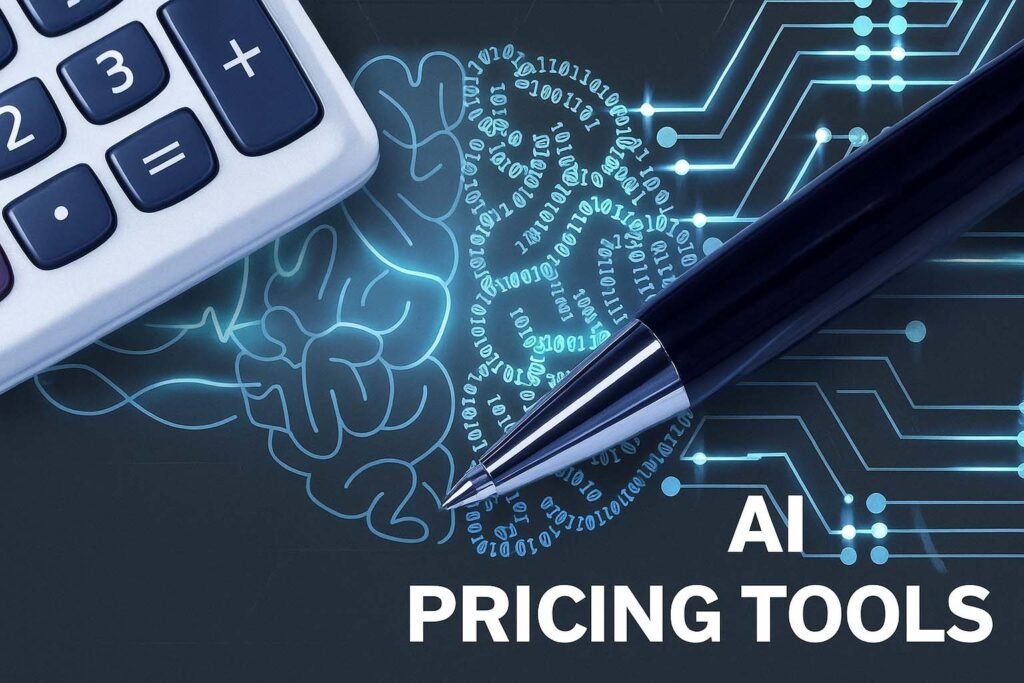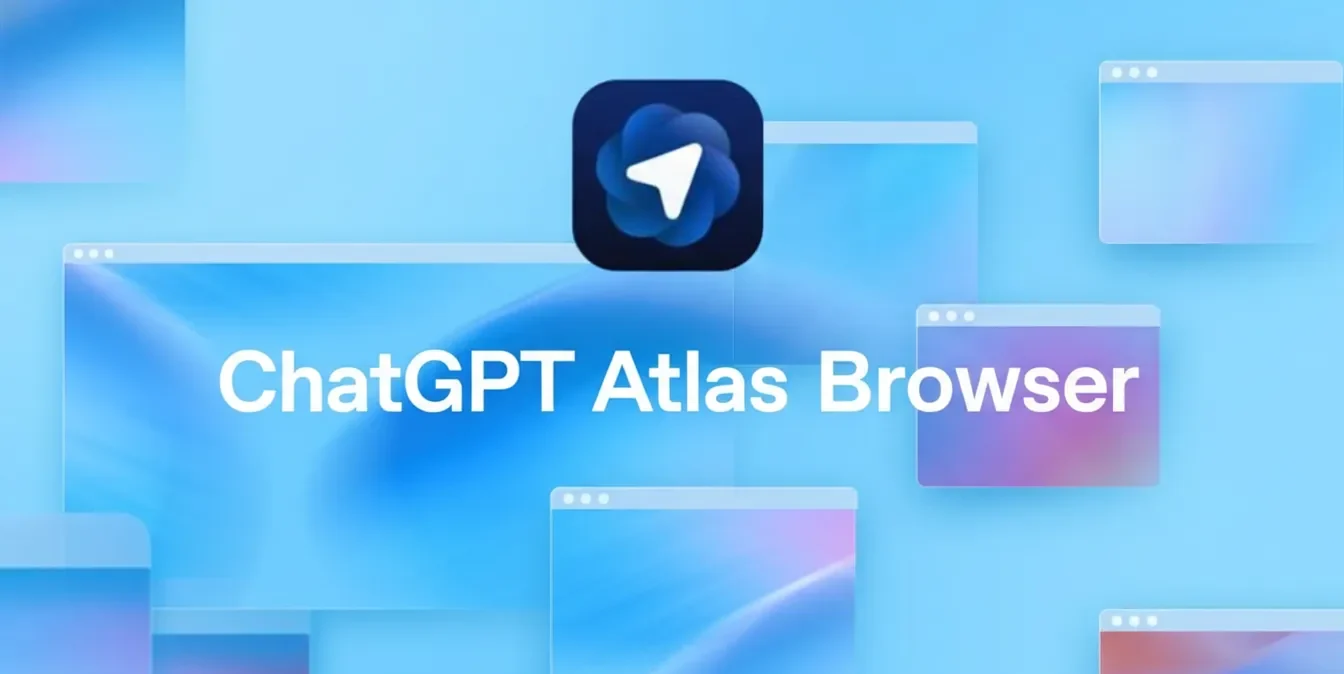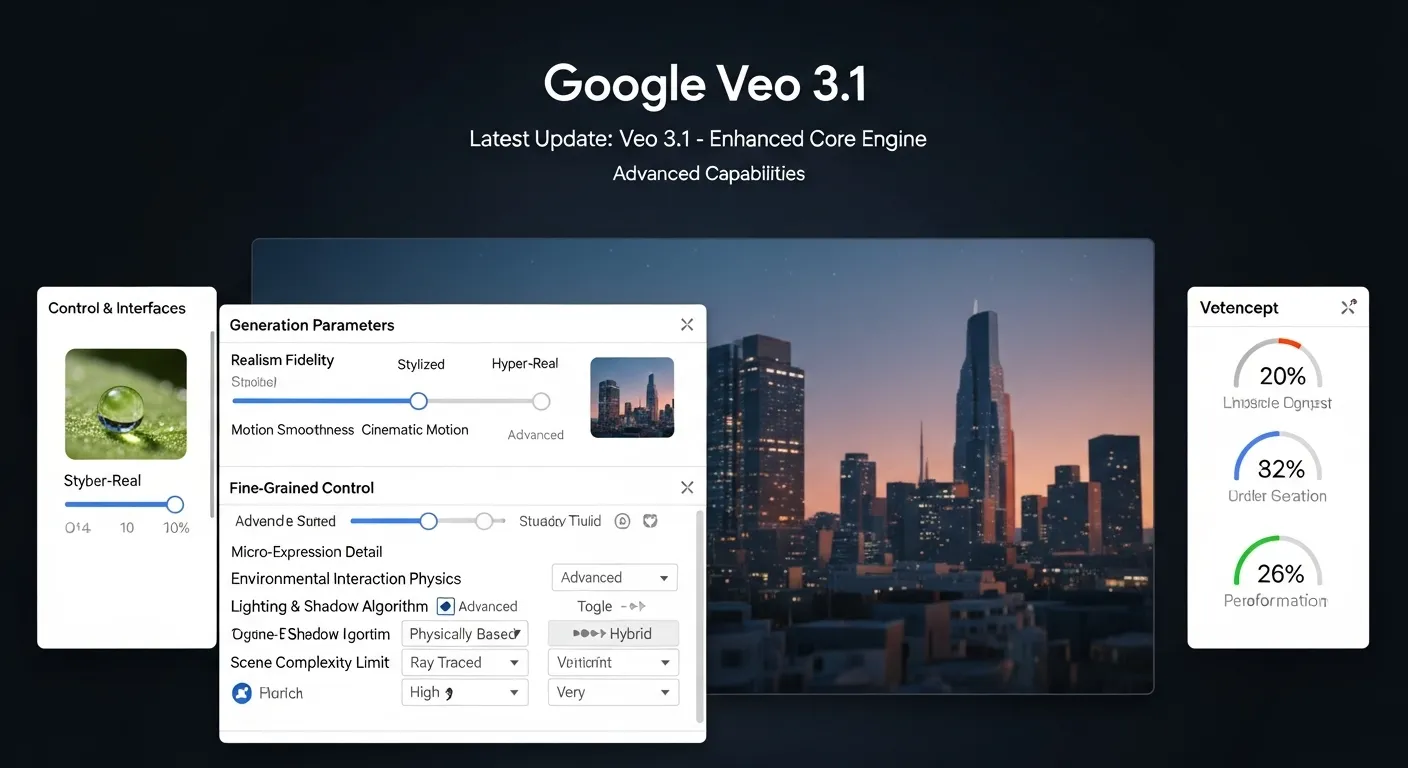AI Pricing Tools: The Future of Smart, Data-Driven Pricing

Table of Contents
- AI Pricing Tools: The Future of Smart, Data-Driven Pricing
- Introduction: Why AI Pricing Tools Are Game-Changers
- What Are AI Pricing Tools?
- Benefits of Using AI Pricing Tools
- Key Features to Look for in AI Pricing Tools
- Top AI Pricing Tools in 2025
- How AI Pricing Tools Are Used Across Industries
- Challenges of AI Pricing Tools
- Future Trends in AI Pricing
- Conclusion
Introduction: Why AI Pricing Tools Are Game-Changers
Pricing has always been one of the toughest challenges in business. Set prices too high, and you risk losing customers. Set them too low, and you leave money on the table. AI pricing tools are revolutionizing how companies solve this problem by using data-driven insights, automation, and predictive algorithms to set optimal prices in real time.
Whether you’re in eCommerce, SaaS, travel, or retail, these tools offer a powerful way to balance profitability, competitiveness, and customer satisfaction.
What Are AI Pricing Tools?
AI pricing tools are advanced software platforms that use artificial intelligence and machine learning to optimize product and service pricing in real time. Instead of relying on static price lists or manual research, these tools evaluate millions of data points to help businesses make smarter pricing decisions that align with both market demand and customer expectations.
At their core, they are designed to answer one critical question: What is the best price to maximize revenue and competitiveness at any given moment?
How AI Pricing Tools Work
AI pricing tools gather and process data from multiple sources, then apply predictive algorithms to recommend or automatically implement the best price. The process typically involves four key components:
Machine Learning Algorithms
Identify pricing trends and historical buying patterns.
Learn from past sales performance to refine future recommendations.
Continuously improve accuracy as more data becomes available.
Real-Time Competitor Monitoring
Tracks competitor pricing across eCommerce platforms, retail stores, or SaaS competitors.
Detects price drops, promotions, or sudden shifts in the market.
Adjusts your pricing instantly to maintain competitiveness.
Customer Segmentation & Behavior Analysis
Uses behavioral data (browsing habits, past purchases, demographics) to understand what different customer groups are willing to pay.
Supports personalized pricing strategies, offering discounts or premium rates depending on customer value.
Demand Forecasting
Predicts how demand will fluctuate during holidays, seasonal peaks, or promotional campaigns.
Prevents overpricing during slow demand periods or underpricing during high-demand seasons.
Improves inventory management by aligning stock levels with projected sales.
Why They’re Different from Traditional Pricing Software
Unlike traditional tools that rely on fixed rules or manual updates, AI pricing tools adapt continuously. They don’t just react to competitor changes; they predict and simulate outcomes before adjustments are made. This proactive approach allows businesses to capture revenue opportunities that might otherwise be missed.
Example in Action
Imagine an online electronics store using an AI pricing tool:
A competitor drops the price of a laptop by 10%.
The AI tool detects this change instantly, analyzes whether matching or slightly undercutting the price will boost conversions without harming margins, and then automatically adjusts pricing on the store’s website.
At the same time, it forecasts weekend demand for accessories and bundles, recommending promotions that increase overall cart value.
The result: optimized revenue and a stronger competitive edge, all without manual intervention.
Benefits of Using AI Pricing Tools
Adopting AI pricing tools gives businesses a clear advantage in today’s fast-moving, competitive markets. These platforms don’t just simplify pricing — they transform it into a strategic growth engine. Below are the most impactful benefits:
1. Increased Profitability
AI-powered pricing ensures that every product or service is priced at its maximum revenue potential. Instead of guessing or sticking to outdated markups, these tools:
Identify the sweet spot where sales volume and profit margins meet.
Prevent underpricing that eats into margins.
Detect overpricing risks that drive customers away.
Example: An online fashion retailer used AI pricing to adjust prices on seasonal collections, resulting in a 15% boost in profit margins without reducing sales.
2. Real-Time Competitor Analysis
In highly competitive sectors like eCommerce or travel, staying ahead means knowing what competitors charge — instantly. AI pricing tools:
Scan thousands of competitor listings in real time.
Detect changes in discounts, flash sales, or promotional bundles.
Recommend or automatically apply price adjustments to maintain competitiveness.
Example: A hotel chain uses AI pricing to respond immediately to nearby competitor rate changes, ensuring they attract customers without sacrificing profit.
3. Better Customer Experience
Pricing directly influences customer trust and loyalty. AI ensures fairness by delivering value-based pricing tailored to different customer needs. Benefits include:
Dynamic pricing that reflects market conditions and perceived value.
Personalized offers for loyal or high-value customers.
Transparent and responsive adjustments that build credibility.
When customers feel they’re paying a fair price, they’re more likely to return and recommend your brand.
4. Efficiency and Automation
Manual pricing is time-consuming, error-prone, and nearly impossible at scale. AI pricing tools remove this burden by:
Automating price changes across thousands of SKUs.
Syncing prices directly with eCommerce platforms or POS systems.
Allowing teams to focus on strategy, innovation, and customer experience instead of spreadsheets.
For businesses with large product catalogs, automation is not just a benefit — it’s a necessity.
5. Data-Driven Decisions
Guesswork has no place in modern pricing. AI pricing tools turn raw data into actionable strategies by:
Using predictive analytics to anticipate demand shifts.
Running simulations to test the impact of different pricing strategies.
Offering visual dashboards that simplify decision-making for managers.
This enables companies to pivot quickly, reduce risks, and confidently align pricing with long-term business goals.
Key Features to Look for in AI Pricing Tools
Not all AI pricing tools are created equal. The best solutions combine flexibility, automation, and deep analytics to adapt to your unique business model. When evaluating options, prioritize tools that include the following features:
1. Dynamic Pricing Engines
Continuously adjust prices based on demand, competitor behavior, and market conditions.
Ensure you’re never underpriced or overpriced, even in fast-moving markets.
Particularly valuable for retailers managing thousands of SKUs or service providers in highly competitive industries.
2. Competitor Tracking Dashboards
Provide real-time visibility into what competitors are charging.
Highlight trends, promotions, and discount strategies across multiple channels.
Allow you to benchmark performance and proactively respond to shifts.
Essential for businesses in eCommerce, travel, and hospitality, where competitor pricing changes by the hour.
3. Demand Forecasting Capabilities
Predict customer demand using historical data, seasonal trends, and external factors (e.g., holidays, economic conditions).
Help avoid stockouts during peak demand and reduce overstocking during slow periods.
Support smarter promotional planning by aligning discounts with actual buying patterns.
4. Price Elasticity Modeling
Measures how sensitive customers are to price changes for each product or service.
Identifies the exact point where small price increases can boost margins without reducing sales volume.
Enables differentiated pricing strategies across product categories or customer segments.
5. API Integrations with eCommerce Platforms
Seamlessly connect with popular platforms like Shopify, WooCommerce, Magento, BigCommerce, and Salesforce Commerce Cloud.
Ensure pricing updates happen instantly across online stores, marketplaces, and POS systems.
Reduce the risk of mismatched prices across channels.
6. Custom Rule-Based Pricing
Allow you to set parameters that align with your brand strategy. For example:
Never price below a certain margin.
Always match or undercut a specific competitor.
Maintain premium positioning in certain categories.
Combines automation with human oversight, giving businesses flexibility and control.
✅ Pro Tip: The most powerful AI pricing tools combine all of these features into a single, easy-to-use platform, offering both automation for scale and customization for strategy.
Top AI Pricing Tools in 2025
Here are ten of the most widely used and trusted AI pricing tools businesses rely on to stay competitive and maximize revenue:
1. Prisync
Specializes in eCommerce and retail.
Tracks competitor prices across multiple markets in real time.
Provides automated repricing rules to optimize product margins.
Integrates with platforms like Shopify, Magento, WooCommerce, and BigCommerce.
Best for small to mid-sized online retailers needing quick, automated pricing updates.
2. PROS Smart Price Optimization
Built for enterprises and B2B companies.
Uses advanced predictive AI models for demand forecasting and pricing simulations.
Aligns pricing with global market shifts and industry volatility.
Particularly strong in aviation, manufacturing, and logistics.
Best for large enterprises needing scalability and complexity handling.
3. Pricefx
A cloud-native enterprise pricing platform.
Offers elasticity analysis, AI-driven simulations, and CPQ (Configure-Price-Quote) solutions.
Highly customizable for complex industries like telecom, automotive, and pharmaceuticals.
Known for its flexibility and large-scale deployments.
Best for companies seeking deep customization.
4. Dynamic Pricing by Omnia Retail
Designed for retailers and brands.
Combines rule-based pricing with machine learning.
Allows businesses to maintain brand identity while staying competitive.
Provides easy-to-use dashboards for monitoring pricing strategies.
Best for mid-to-large retailers balancing automation with human oversight.
5. Competera
Strong focus on omnichannel retail.
Provides market-driven insights and elasticity-based pricing.
Helps businesses grow profit while maintaining competitive positioning.
Supports both B2C and B2B pricing scenarios.
Best for retailers operating across multiple sales channels.
6. BlackCurve
Focused on SMBs and online retailers.
Simplifies complex pricing strategies into easy-to-use tools.
Provides competitor monitoring, rule-based pricing, and margin optimization.
Cloud-based and fast to deploy.
Best for small-to-medium businesses wanting affordability and simplicity.
7. Perfect Price
Uses AI and reinforcement learning for real-time dynamic pricing.
Commonly used in car rentals, ride-sharing, and travel industries.
Learns from customer behavior to recommend optimized pricing strategies.
Helps businesses adapt instantly to supply-demand fluctuations.
Best for industries with volatile demand patterns.
8. Quicklizard
Specializes in real-time dynamic pricing.
Provides pricing automation across eCommerce, retail, and marketplaces.
Strong integrations with ERP and eCommerce systems.
Helps retailers scale pricing strategies globally.
Best for businesses expanding into multiple regions and currencies.
9. Intelligence Node
AI-powered pricing and retail analytics platform.
Monitors millions of SKUs across global markets in real time.
Provides competitor benchmarking and price optimization insights.
Known for its scalability and data accuracy.
Best for large retailers with vast product catalogs.
10. Revionics (An Aptos Company)
Enterprise-grade AI pricing and promotion optimization.
Strong in grocery, retail, and consumer goods.
Offers demand-based pricing, markdown optimization, and promotion planning.
Backed by over a decade of retail industry expertise.
Best for large retailers with frequent promotions and complex pricing cycles.
👉 Summary:
From startups to global enterprises, these AI pricing tools empower businesses to adapt faster, improve margins, and deliver value-driven pricing. The right choice depends on your industry, scale, and need for customization.
How AI Pricing Tools Are Used Across Industries
AI pricing tools are not limited to one niche. Their adaptability makes them valuable across a wide range of industries, each with unique challenges and opportunities.
1. eCommerce
Online retail is one of the biggest beneficiaries of AI-driven pricing. With thousands of SKUs, constant competitor shifts, and marketplaces like Amazon and eBay setting the pace, staying competitive is nearly impossible without automation.
Dynamic repricing: Instantly adjusts product prices based on competitor listings and demand.
Bundling and promotions: Recommends discounts on related items to increase average order value.
Cross-border sales: Optimizes pricing across currencies, taxes, and regional demand patterns.
Example: A mid-sized fashion retailer used AI pricing to optimize sales during Black Friday, increasing revenue by 22% while keeping margins intact.
2. SaaS (Software as a Service)
For software companies, pricing isn’t about physical products — it’s about value perception and subscription models. AI pricing tools help SaaS businesses find the sweet spot between affordability and profit.
Tier optimization: Analyze which subscription tiers drive the most conversions.
Churn reduction: Detect early signs of customer drop-off and adjust pricing or offer incentives.
Usage-based pricing: Align prices with customer activity levels to maximize fairness and retention.
Example: A project management SaaS used AI pricing simulations to redesign its tiers, improving user retention by 18%.
3. Travel & Hospitality
Airlines, hotels, and car rental companies pioneered dynamic pricing, and AI has taken it to the next level.
Seasonality management: Predicts peak travel demand to adjust fares and room rates.
Competitor benchmarking: Monitors rates across booking platforms like Expedia or Booking.com.
Last-minute optimization: Maximizes revenue from unsold inventory by adjusting prices in real time.
Example: A regional airline applied AI pricing to adjust ticket rates dynamically, boosting seat occupancy by 12% without lowering average revenue per seat.
4. Manufacturing & Wholesale
In industries where bulk orders and fluctuating supply chain costs dominate, AI pricing tools ensure sustainable profitability.
Bulk discount optimization: Recommends tiered discounts without cutting too deep into margins.
Market volatility management: Adjusts pricing to reflect raw material costs and supplier price changes.
Global pricing strategies: Accounts for tariffs, shipping costs, and regional demand.
Example: A wholesale distributor used AI pricing to adapt to steel cost fluctuations, protecting margins while maintaining client loyalty.
Challenges of AI Pricing Tools
While transformative, AI pricing tools also bring challenges businesses must manage carefully:
Initial Setup Costs
Advanced platforms often require significant investment and integration time.
Smaller businesses may find entry-level solutions more manageable before scaling.
Over-Reliance on Automation
Blindly following AI recommendations can lead to misaligned strategies.
Human oversight is essential for brand positioning and long-term goals.
Customer Perception
Consumers may view frequent price changes as unfair or manipulative.
Transparent communication and clear value propositions are key to avoiding backlash.
Future Trends in AI Pricing
The future of pricing will go beyond automation, with AI tools becoming more personalized, ethical, and integrated into everyday commerce:
Personalized Pricing
Tailoring offers and discounts to individual customers based on loyalty, purchase history, or lifetime value.
AI + Blockchain Integration
Using blockchain to provide transparent and verifiable pricing data, building trust in industries like pharmaceuticals or luxury goods.
Sustainability-Driven Pricing Models
Adjusting prices based on eco-friendly products, carbon footprints, or consumer demand for sustainable goods.
Voice Commerce Adaptation
Optimizing pricing for purchases made via voice assistants like Alexa, Siri, or Google Assistant as voice shopping continues to rise.
Conclusion
In a world where competition is fierce and consumer expectations are constantly shifting, AI pricing tools are no longer optional — they’re essential.
From eCommerce giants to SaaS providers, airlines to wholesalers, these tools empower businesses to:
Make smarter, faster pricing decisions.
Increase profitability without sacrificing customer trust.
Build resilience against market volatility.
Whether you run an online store, a subscription-based business, or a global retail chain, embracing AI-driven pricing today means securing long-term competitiveness and sustainable growth tomorrow.
Read More:
- All Posts
- Blogs

Try Nano Banana Pro Free Unlimited 4K by Mo Khaled | November 22, 2025 Table of Contents Try Nano Banana...

Filmora V15 Launch: AI-Powered Revolution in Video Editing (2025 Update) Introduction: Filmora V15 Redefines Creative Video Editing Wondershare has officially...

ChatGPT Atlas Browser: The Next-Gen AI Browser Revolution by Mo Khaled | October 14, 2025 Table of Contents Lalal.ai: AI...

How to Make Money with AI Art The world of art is undergoing a revolutionary transformation, driven by the incredible...

Veo 3.1 Is Now Available via Pippit – and You Can Try It for Free! 🚀 The Future of AI...

Limited-Time OMVA Offer: Free Music Video Creation + $50K Prize — What You Need to Know Are you a musician,...
